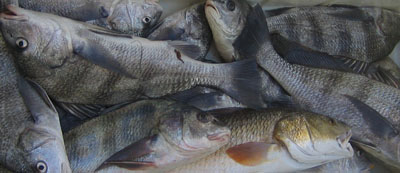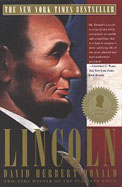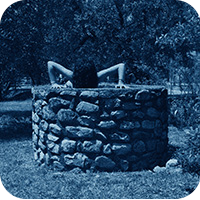Deliberately wearing the wrong clothes
I’m a Civil War novice. Dad paraded my siblings and I yawningly through battlefield after battlefied in our youth and I’ve come to know patriotic Galena, Illinois — Ulysses Grant’s place of residence at the outbreak of the war — as a second home over the last decade and a half. Still, I know next to nothing about the war or the period. I’m just an unreconstructed European Studies major dropout, I guess.
That’s changed recently, though. Or, is starting to anyway. During the course of the International Freedom Center project and the Eternal Egypt History Channel documentary I had the fortune of working with Peter Kunhardt, principle of the documentary team at Kunhardt Productions and descendant of Frederick Hill Meserve, one of the earliest and certainly the most prolific collector of Civil War photographs in the country. The collection, begun in the 1890’s, contains nearly 200,000 images including all of the known extant photographs of Abraham Lincoln. (Yeah, you read that right.) Peter and his brother Philip are conscientious stewards of this trove and their enthusiasm for the subject matter is infectious.
I met the brothers in Springfield a while back to tour the new Abraham Lincoln Presidential Library and Museum. It was a surprisingly moving experience. Hard to impress when it comes to museums, I left thoroughly so. So my interest was piqued and I purchased David Herbert Donald’s Lincoln. The biography was engrossing and powerful, an ample primer to the universe of scholarship and opinion surrounding Lincoln as we approach the bicentennial of his birth. Donald sticks very close to Lincoln and the primary sources, letting the eloquence and complexity of the railsplitter’s life emerge on its own. The picture that develops of Lincoln is of a politically-engaged but heretofore mostly politically-failed misfit whose genius, once in office, could be attributed to his ability to hold together magnetically repulsive personalities in his cabinet, to capitalize on his caricature-as-character backwoodsiness, and to steadfastly adhere to conviction inside a tempest of diverse national opinion.
Donald’s biography ends a few sentences after Lincoln is pronounced dead, basically hanging this Civil War-era neophyte off the narrative cliff. But, rather than pick up the thread at Reconstruction I’ve backed up a bit and started on William McFeely’s Grant. A different type of book than Donald’s, McFeely’s Grant often tells the story from inside Grant’s head, reading into his spartan correspondence and statements with something approaching pscyhoanalysis. Where Mary Todd Lincoln is a big part of Donald’s book, Julia Grant is the key to the life of her husband for McFeely. Her letters to Grant do not survive, but his replies to her serve as a touchstone for much of the insight into the man’s character. Grant’s relationship with his father — who seemed never happy with his son’s increasing accomplishment — is also closely read.
One similarity between these two very different giants of American history is striking. McFeely calls Lincoln and Grant both “masters at deliberately wearing the wrong clothes,” that is, at being able to use difference as an advantage, deriving vitality from the friction of idiosyncracy rather than the comforts of likemindedness.
I’m not finished with Grant nor, I suspect, with this period. You won’t see me re-enacting Bull Run any time soon, but I fear I’m hooked. Suggestions for future reading are very welcome.
Incidentally, for you parents out there, the Kunhardt brothers have another claim to fame. They are the grandsons of Dorothy Kunhardt, author of the classic children’s book Pat the Bunny.
Shallowed ground
I took a long weekend fishing trip to coastal Texas last week, which explains the brief posting hiatus. It was in almost all respects the very opposite of the fishing trip to Canada I took earlier this year — except that we were still catching large fish, thankfully.

This time, instead of a maniacal Indian guide who used his free time hunting moose with an axe, we had Larry, a weathered good ol’ boy with enough life experience stories to have our rapt attention during the lulls between finding fish. Larry was a native of Aransas Pass, Texas, a small nearby town whose economy, like most of coastal Texas, ebbs and flows with the fortunes of the energy sector and the abundance of catchable wildlife that swim in or fly over the intercoastal waterway. Tip: when talking to a guy about his experience working on a deep sea oil rig don’t make the mistake of jokingly asking him if he still has all his digits. To my mortification, he raised a hand and showed me that, in fact, he didn’t. Ha ha, bad joke. But he took it in stride and proceeded to tell us a horrifying story of being trapped in a cage elevator that had stuck under the drilling platform. Perfectly describing the universal fear of climbing partially out of an elevator only to have it begin moving again Larry told us matter-of-factly how the unstuck cage sliced off his finger as he grasped the ledge. Comes with the territory, I guess. He actually seemed more irritated at having been hooked in the nose by a huge spoon lure from a novice client’s cast on his guide boat. (This client, unbelievably, tipped Larry $5 and said he should get himself a beer after he removed the barbed tip from his face and continued to guide them the entire day!)
Of course, even with Larry, Mother Nature rules. Some houses on the coast were still boarded up from Rita, which thankfully missed to the north. The intercoastal waterway itself is an ever-changing expanse of extremely shallow water whose sub-surface topography is a constant challenge to boaters. The waterway with its dredged shipping channel for barges is more like a series of rivers that flow together and apart — except that the “land” between the rivers is water too. I’m glad I was drinking beer in the passenger seat. Navigation is the real reason to have a guide. Lifelong natives of the area can flit around the waterway at high speed deftly reading slight changes in the surface to know when three feet of water suddenly changes to six inches. The ability is uncanny and more than once our tag-along boat without Larry grounded itself suddenly, embedding its prop into the mud and spewing a halo of muck far into the air. (Incidentally Larry hates tag-along boats. He says it is “like dating a fat girl.”)
You too can experience the stories and marine life expertise by visiting Larry’s website. Be sure to check out the Blast and Cast special (hunting ducks in the morning, fishing in the afternoon). I don’t hunt, but I like the sound of it.
Yep, he’s a geek
I had the chance to steal Nicholas Negroponte’s laptop last night. I chose not to. He put it down for only a second.
We were on the same flight from Chicago to White Plains and, just as you’d suspect, his nose was buried in a laptop from the moment I spotted him in the gate area, through check-in, down the jetway into his seat — pause for takeoff, nervously — back on the whole flight — pause for landing, grumpily — balance on palm and back into it off the plane, into the baggage area. He actually made his chaffeur stand there, bags draped off him, while he did something on his laptop, still balanced on his left palm. What the hell was he doing? Surfing? Not typing, certainly. Being … digital?
(Actually I think he was working on this.)
UCLA
If anyone is in the LA area on Nov. 17 you’re hereby invited to attend a lecture I will be giving at UCLA. Here’s an abstract and logistics. The talk is part of series put on by the talented people at the Center for Research in Engineering, Media, and Performance and the Experiential Technologies Center. Should be a lively evening. Drop me a line if you’d like to meet up.
Post-Halloween morsels
Miniaturized for easy distribution.
I should have known when Craig ate his words about this guy, but only now do I understand the genius that is Four Tet. Folktronica is a silly term I will type only this once, though what it is trying to describe is accurate enough. I’d like to see Kieran Hebden and Amon Tobin go head-to-head in a sudoku tournament.
Further afield is Tadd Mullinix, an Ann Arborite with two beautiful, intricately glitchy albums to date. Good stuff, if you like abstract electronica.
Why I never thought of using power tools to carve pumpkins before this season is a mystery to me. For example, in addition to creating new patterns and being a lot easier than hacking with a paring knife, the power drill whirls pumpkin crud all over the kitchen when it pierces the pumpkin shell. How fun is that?
There is a doctoral disseration waiting to be written in probability theory about the certitude that the moment you begin futzing in a gym locker the person occupying the locker immediately to your left or right will return from the gym to do the same, causing crampedness and often nude crampedness. Which is uncomfortable. This happens in gyms where you bring your own lock and also in those that distribute keys (where, presumably, some sort of front desk intelligence could space out locker assignments over time).
This month’s Wired contains a short piece on the way technology itself is the ghostly medium in most recent horror films. Clearly the Wired staff reads Ascent Stage.
Drop the needle

I couldn’t wait for the CD so I purchased the new Biosphere album Dropsonde in vinyl, my first record purchase in four years or so. Coming on the heels of my recent Boards of Canada fake-track debacle (only possible in these digital music-obsessed days) it was a completely enjoyable, material experience. I was instantly in grade school again, fetishizing the platter and poring over the cover art as if I held a Rembrandt in my hands. Of course I immediately digitized it and have embarked on the daunting — though so pleasingly nostalgic — task of doing the same for all the 33’s and 45’s that I do not own digitally. On some of the records I actually remember every scratch and hiss as if they were part of the original recording.
Ways in which vinyl is better than bits:
– Imperfections in the vinyl, especially those caused by the owner (needle dropped too hard, flattening of the grooves from overplay, etc.) make that album more personal, indelibly stamping it as unique and yours-alone. Call it analog watermarking.
– At a glance you can instantly see the relative durations of all the songs on a side. Sorta like the advantage of an analog watch. You only need spatial awareness to see that you have a quarter of a circle’s worth of time before your meeting.
– Perfectly hitting the blank grooves between songs with the stylus is damn satisfying.
– Cover art, cover art, cover art. Bigger, badder, bolder.
And the album Dropsonde? It is as good as they say. Geir appears to be infatuated with jazz percussion. The minimalism of Autour de la Lune is gone and occasionally a higher-range line (“melody” would be imprecise) takes over in a way reminiscent of his older work. Highly recommended.
Black Sox no longer
Last night I had the crazy notion that, with a world champion team to call their own, White Sox fans would lose the massive chip on their shoulders about the Cubs. You’d not know it these days, but Cubs fans greatly outnumber Sox fans in the city and throughout the country (thanks to years of national coverage by WGN). Wrigley Field is a tourist destination by itself and while the new new Comiskey — pardon me, The Cell — is a great park, it still doesn’t hold a candle to Cubs field and Wrigleyville. This has nothing to do with the quality of the respective sports teams, of course. It is all about the perceived sense of importance to the city. (And perhaps lingering guilt over the team’s scandalous collusion with gamblers in 1919?)
Will the inferiority complex dissipate now that the Sox are the champs?
Headmuffs
I have too many types of headphones I think.
- Earbuds for iPod listening during the commute. (Apple iPod Earbud Headphones, not the ones that come with the iPod — decent sound, not great)
- Sweat-proof, collapsible headphones for running (Sony MDR-A35G S2 Sports Headphones — love these, sweat is not an issue and I am one sweaty bastard)
- Crappy earbuds for inserting under hat when running outside in winter (whatever)
- Noise-cancelling for long plane flights and at work (Sennheiser PXC 250 — LOVE these, highly recommended)
- Big padded ones for make-believe DJ’ing (Sennheiser HD 202 — nothin’ special)
When I travel I actually have three of these in my backpack. That’s ridiculous. What is my problem?
Reluctant cheerleader
The World Series has me in a real dilemma.
Fact #1: I greatly dislike the White Sox. Or rather, I’m no fan of their fans who, you can be sure, would not be cheering on the Cubs if by some cosmic anomaly they made it to the World Series.
Fact #2: I love Chicago and I love that any of our sports teams is so dominant.
Fact #3: I am married to a woman with a great deal of family in Houston (more since Katrina) and so
must deal with a large pro-Houston lobby.
I suppose it is better than a Sox-Cardinals series. That would have been too much for any Cubs fan.
Grandpa’s gonna spin in his grave, but … Go Chicago!
The steam will rise again
Perhaps catering to its larger blue collar readership, the Sun-Times scooped the Trib in covering a story of great importance to the public bathers of the city. The good news is that the Division Street Baths are closed for remodelling and will reopen next year most likely, just in time for its 100th birthday. Thank goodness, but why on earth would they do this over the winter when we need it most?
Kudos to Greer for tracking this down. And, May, if you’re not demoted at the Tribune for dropping this particular lead I may ask my vast readership to start a blogging campaign highlighting your journalist negligence.
Viva fat sweaty men flagellating themselves with oak switches!
See also: Sensory deprivation















